2 July 2025
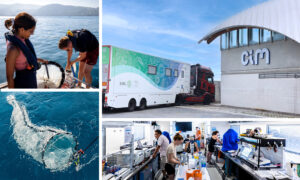
Around 40 researchers will participate in this joint initiative, which will take place at the Toralla Marine Science Station in Vigo, Spain.
LAB MATTERS
27 June 2025
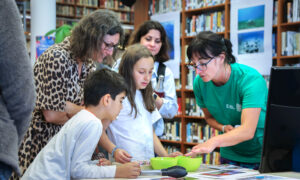
On this Oceans Day, EMBL’s Science Education and Public Engagement (SEPE) Team joined forces with the German-American Institute (DAI) to bring the underwater world closer to families in Heidelberg.
LAB MATTERS
12 June 2025

Parkinson's disease, a neurodegenerative condition causing motor and non-motor symptoms like gut issues (often appearing decades early), is being investigated for its link to the gut microbiome. While previous studies have shown gut microbiome changes in Parkinson's patients, a clear consensus on…
SCIENCE & TECHNOLOGY
2025
sciencescience-technology
5 June 2025
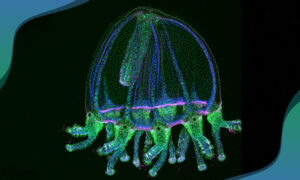
EMBL scientists are on a quest to investigate the underlying biological processes that enable regeneration in jellyfish, which could also help us understand how wounds heal.
SCIENCE & TECHNOLOGY
19 May 2025
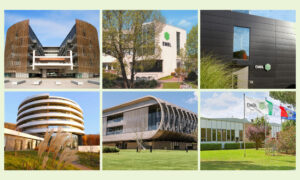
As Peer Bork and Ewan Birney take up interim leadership of EMBL, the organisation announces additional changes in site leadership.
EMBL ANNOUNCEMENTS
15 May 2025

Five key takeaways from an EMBL | EMBO symposium that explored the ‘wild frontiers’ of model organisms, from phytoplankton to sea anemones, waterstriders, roundworms, and more.
SCIENCE & TECHNOLOGY
9 April 2025
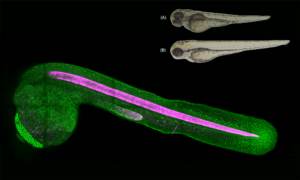
EMBL scientists investigate how zebrafish bodies change when grown at higher temperatures.
SCIENCE & TECHNOLOGY
24 March 2025
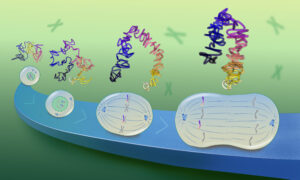
EMBL scientists have shown how overlapping loops of DNA stack upon each other in dividing cells to give rise to rod-shaped chromosomes.
SCIENCE & TECHNOLOGY
20 March 2025
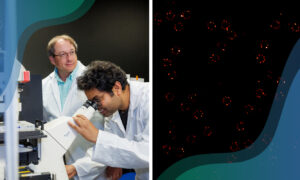
Texas A&M University researchers work with experts from EMBL Imaging Centre to uncover how molecules navigate the nuclear pore complex.
SCIENCE & TECHNOLOGY
20 February 2025
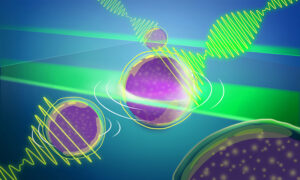
Another EMBL-engineered advance to Brillouin microscopy has significantly widened the aperture to provide quick 3D imaging in real time of light-sensitive samples.
SCIENCE & TECHNOLOGY
13 February 2025
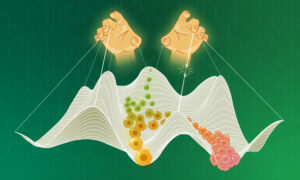
Scientists at EMBL and DKFZ have discovered how cells in the liver maintain their identity and avoid becoming tumour cells.
SCIENCE & TECHNOLOGY
10 January 2025
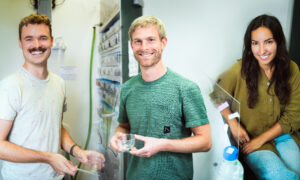
The Arendt Group at EMBL Heidelberg focuses on mechanisms of evolution, studying Platynereis dumerilli – evolutionarily ancient marine worms found broadly along European coasts.
SCIENCE & TECHNOLOGY
18 December 2024
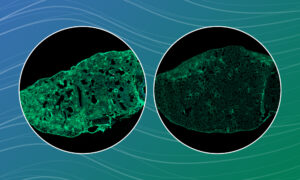
EMBL scientists discovered that dextromethorphan, an FDA-approved active ingredient in cough syrups, has potential to treat fibrotic lung disease by containing collagen and other pro-fibrotic molecules capable of forming scars inside the cells.
SCIENCE & TECHNOLOGY
17 December 2024
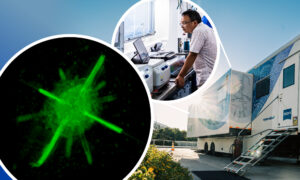
The Prevedel group at EMBL Heidelberg developed a mobile microscope: miniature in scale, fast in sample imaging, and giant in resolution.
SCIENCE & TECHNOLOGY
16 December 2024
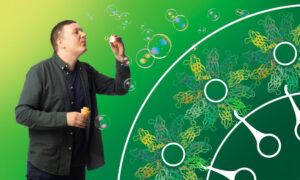
Veijo Salo, postdoc at EMBL Heidelberg, talks about seipin, the cell’s molecular ‘bubble blower’.
PEOPLE & PERSPECTIVES
4 December 2024
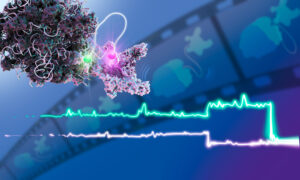
With a novel approach, EMBL scientists discovered important interactions between molecular machines, potentially offering new opportunities for drug development.
SCIENCE & TECHNOLOGY
29 November 2024
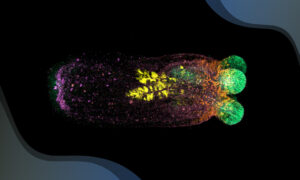
Scientists have shown how regenerating sea anemones restore their shape following a major injury, uncovering novel cellular and molecular mechanisms.
SCIENCE & TECHNOLOGY
21 November 2024

A recent symposium on ‘The complex life of RNA’ brought together scientists from across the world interested in exploring one of the most crucial molecules essential to life.
SCIENCE & TECHNOLOGY
15 November 2024

Yuvarani Masarapu, a junior bioinformatician and doctoral student at SciLifeLab in Stockholm, spent a week with EMBL collaborators, finding solutions to research challenges and expanding her scientific perspective.
CONNECTIONS
13 November 2024
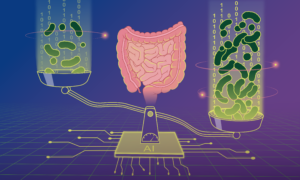
Scientists have developed a new machine-learning model to predict microbial load — the density of microbes in our guts — and used it to demonstrate how microbial load plays an important role in disease-microbiome associations.
SCIENCE & TECHNOLOGY
31 October 2024
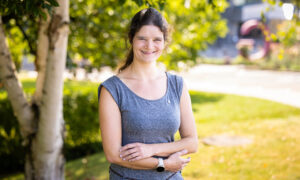
Isabella Graf is EMBL’s newest group leader and the first theoretical biophysicist to join the Developmental Biology Unit.
PEOPLE & PERSPECTIVES
28 October 2024
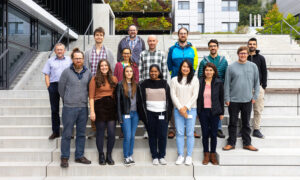
The ARISE summer school brought together fellows from across EMBL sites who are working on technology projects as part of EMBL’s Career Accelerator for Research Infrastructure Scientists (ARISE) programme.
CONNECTIONS
24 October 2024
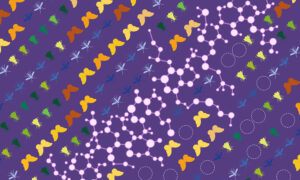
Employing a library of more than 1,000 chemicals, EMBL researchers and collaborators investigated how agrochemicals affect insect populations.
SCIENCE & TECHNOLOGY
24 October 2024
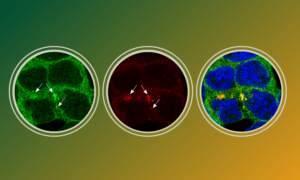
Scientists have discovered how the antiviral protein TRIM25 finds and binds viral RNA to activate an innate immune response.
SCIENCE & TECHNOLOGY
21 October 2024
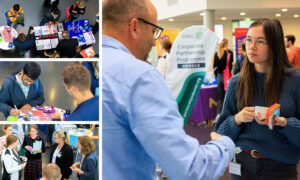
EMBL’s first Industry Day offered EMBL scientists a unique opportunity to network with several leading life science companies.
CONNECTIONS
10 October 2024
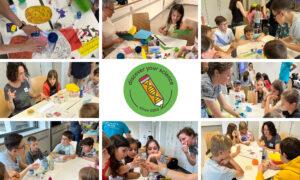
A hands-on workshop offered an excellent opportunity for scientists to connect with children with whom they share a common language.
LAB MATTERS
10 October 2024
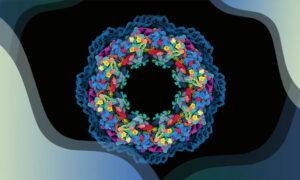
The function of biological molecules is intimately linked to their structure. In the 50 years since EMBL was established, its researchers and engineers have constantly provided leadership in structural biology research and services, resulting in many scientific breakthroughs and novel insights.
SCIENCE & TECHNOLOGY
9 October 2024
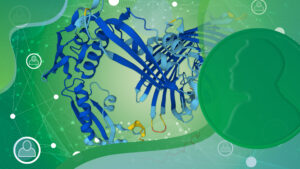
Creators of AI system AlphaFold receive 2024 Nobel Prize for Chemistry.
SCIENCE & TECHNOLOGY
2024
sciencescience-technology
8 October 2024

The prize was awarded to John J. Hopfield, Princeton University, USA, and Geoffrey Hinton, University of Toronto, Canada, for their seminal contributions to the foundational methods that enabled the development of machine learning.
SCIENCE & TECHNOLOGY
8 October 2024
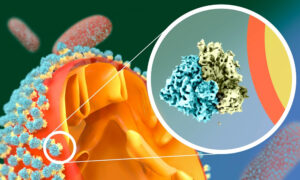
Scientists at EMBL Heidelberg and University of Virginia revealed a new cellular response to starvation: ribosomes attach to the mitochondrial outer membrane in a very unusual way, via their small subunit. The finding made in yeast might provide insights into how cancer cells survive the harsh…
SCIENCE & TECHNOLOGY
18 September 2024
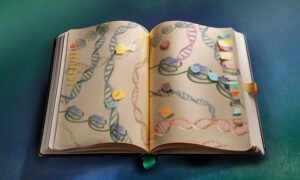
Researchers have identified key cellular control sites that regulate gene expression and prevent the activation of ancient viral sequences in the genome.
SCIENCE & TECHNOLOGY
11 September 2024

Julia Mahamid and Nassos Typas reflect on the direction of the Molecular Systems Biology Unit they now lead at EMBL Heidelberg.
PEOPLE & PERSPECTIVES
10 September 2024

An AI-enhanced advanced microscopy approach offers promise in better understanding glioblastomas, one of the deadliest brain cancers.
SCIENCE & TECHNOLOGY
21 August 2024
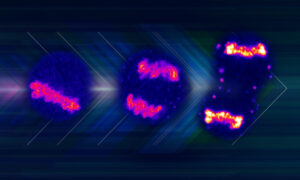
EMBL Heidelberg researchers discovered how a protein switches between repelling and gluing chromosomes during cell division. This helps the mother cell to divide the genome equally into two daughter cells and cluster chromosomes inside the daughter nuclei, ensuring a successful cell division.
SCIENCE & TECHNOLOGY
14 August 2024
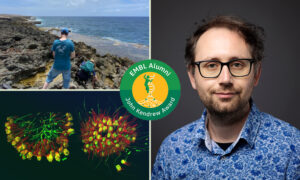
EMBL alumnus Thibaut Brunet, recipient of the 2024 John Kendrew Young Scientist Award, shares his scientific journey – from a childhood passion for nature to the discovery of a new species of choanoflagellate.
PEOPLE & PERSPECTIVES
8 August 2024

EMBL-Stanford Life Science Alliance fellow Jana Helsen shares how she balanced her life between two laboratories and countries, her latest research paper, and her passion for cover art.
PEOPLE & PERSPECTIVES
31 July 2024
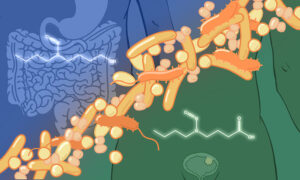
Study shows that gut bacteria can metabolise carcinogens and cause them to accumulate in distant organs, leading to tumour development.
SCIENCE & TECHNOLOGY
4 July 2024

What makes EMBL unique? Among many things, it’s the infinite curiosity of its community.
LAB MATTERS
18 June 2024
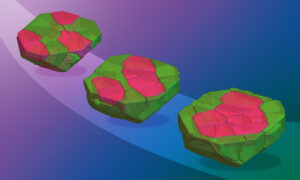
A theoretical model involving tiny Minecraft-like cubes can help us understand dynamic biological processes, such as cell sorting in embryos.
SCIENCE & TECHNOLOGY
17 June 2024

EMBL´s position paper outlines the organisation’s views on the importance of science and how it could be best supported in the context of the upcoming European Framework Programme for Research and Innovation (FP10).
EMBL ANNOUNCEMENTS
22 May 2024
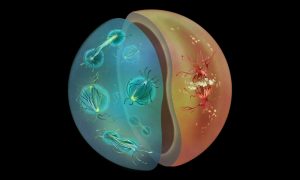
New research by EMBL scientists shows how different modes of cell division used by animals and fungi might have evolved to support diverse life cycles.
SCIENCE & TECHNOLOGY
14 May 2024

Toby Gibson reflects on 38 years at EMBL, the scientific tools he built along the way, and the state of science today.
PEOPLE & PERSPECTIVES
23 April 2024

SpatialData is a tool developed by EMBL scientists in cooperation with multiple research institutions to unify and integrate data from different omics technologies in a spatial environment, providing holistic insights into health and disease. Researchers can now freely access and use SpatialData…
SCIENCE & TECHNOLOGY
22 April 2024
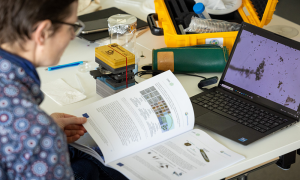
BIOcean5D is an EMBL-coordinated project co-funded by the European Union that unites 31 institutes to address pressing global challenges on marine biodiversity.
LAB MATTERS
20 March 2024
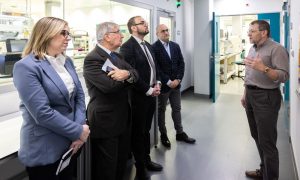
During a visit from high-level representatives of EMBL’s member state Malta, the honourable delegation allowed a peek behind the scenes of their scientific and institutional collaborations, and shared their memories and future aspirations for the partnership.
CONNECTIONS
11 March 2024
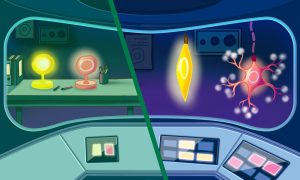
New research from EMBL Heidelberg shows how cells in developing embryos undergo a major shift in the way they regulate gene expression as they mature and differentiate.
SCIENCE & TECHNOLOGY
2024
sciencescience-technology
26 February 2024

Simone Heber talks about studying RNA transport, organising the Bike Club at EMBL, and participating in the Ironman World Championship.
LAB MATTERSPEOPLE & PERSPECTIVES
2024
lab-matterspeople-perspectives
1 February 2024

Renato Alves talks about his time at EMBL, the Bio-IT project, his wishes for EMBL in its anniversary year, and how a passion for night hikes and stargazing led to the creation of EMBL’s astronomy club.
LAB MATTERSPEOPLE & PERSPECTIVES
2024
lab-matterspeople-perspectives
25 January 2024
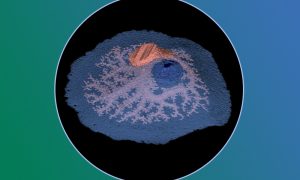
Sponges lack muscles and neurons. Yet, they make coordinated movements. Scientists at EMBL Heidelberg have discovered that sponge movement is controlled by an ancient ‘relaxant-inflammatory’ response that is also present in vertebrate blood vessels. The findings shed light on sponge physiology…
SCIENCE & TECHNOLOGY
2024
sciencescience-technology
14 December 2023
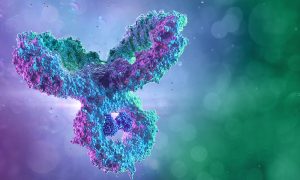
Former EMBL staff scientist founds a start-up – DenovAI – for broader, faster and cheaper antibody discovery using advanced machine learning and computational biophysics.
SCIENCE & TECHNOLOGY
2023
sciencescience-technology
24 November 2023

Representatives from politics, research and the philanthropist community joined the Minister's visit to EMBL exhibition “The World of Molecular Biology” in Heidelberg and welcomed the dialogue between science and society initiated by the exhibition.
CONNECTIONSLAB MATTERS
2023
connectionslab-matters
23 November 2023

Alba Diz-Muñoz and Arnaud Krebs from EMBL Heidelberg have received grants to work on projects that aim, respectively, to understand the cellular mechanics that control cell division and investigate the regulatory networks that govern transcription factor function.
EMBL ANNOUNCEMENTSLAB MATTERS
2023
embl-announcementslab-matters
22 November 2023

EMBL scientist Oliver Stegle explains how AI-based tools have the potential to transform our ability to better understand the complexity of life and how these tools will shape the future of life science exploration.
LAB MATTERSPEOPLE & PERSPECTIVES
2023
lab-matterspeople-perspectives
31 October 2023

Ian Smith, Chair of EMBL Australia´s Council, chats about the synergies between the organisations, opportunities for collaboration, and ideas for exciting new programmes arising out of a recent visit to EMBL Heidelberg.
CONNECTIONSLAB MATTERS
2023
connectionslab-matters
27 October 2023
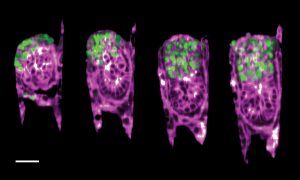
EMBL researchers have created an engineered uterus that allows a closer look at a mouse embryo’s development and its interactions with the uterine environment.
SCIENCE & TECHNOLOGY
2023
picture-of-the-weeksciencescience-technology
26 October 2023

Jan Kosinski, Julia Mahamid, and Georg Zeller have received grants to enable ambitious projects aimed at mapping the cellular protein synthesis machinery in context and understanding complex host-microbiome interactions, respectively.
EMBL ANNOUNCEMENTS
2023
embl-announcementsscience
23 October 2023

Victoria Yan, Open Science & Research Information Specialist, talks about the importance of open science, the challenges she has faced in her career, and what she enjoys about working at EMBL
LAB MATTERSPEOPLE & PERSPECTIVES
2023
lab-matterspeople-perspectives
6 October 2023
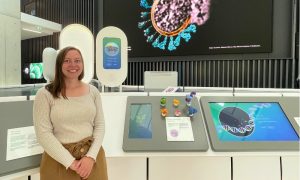
Zuzana Koskova is a PhD student from Slovakia who, at the age of 19, left her country to pursue her career in biological sciences in Germany. In this interview, she talks about her interests, career aspirations, and recent participation at the Info Day held in Bratislava, where she had the…
LAB MATTERSPEOPLE & PERSPECTIVES
2023
lab-matterspeople-perspectives
28 September 2023
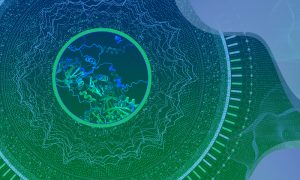
EMBL receives the German AI prize awarded for outstanding services to the research and development as well as application and commercialisation of artificial intelligence (AI) in life science research.
EMBL ANNOUNCEMENTS
2023
embl-announcementsscience
20 September 2023

Thomas Haize talks about his passion for the ocean, what TREC means to him, a day in the field, and the captivating beauty of underwater photography.
LAB MATTERSPEOPLE & PERSPECTIVES
2023
lab-matterspeople-perspectives
18 September 2023
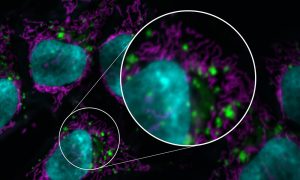
A working group of researchers from the QUAREP-LiMi initiative has developed global guidelines to improve the quality of microscopy data and images published in scientific publications.
SCIENCE & TECHNOLOGY
2023
sciencescience-technology
5 September 2023

Jordi van Gestel and Maria Zimmermann-Kogadeeva each receive 1.5 million EUR funding for research projects on microbial predators and the gut microbiome respectively
EMBL ANNOUNCEMENTSLAB MATTERS
2023
embl-announcementslab-matters
29 August 2023

Therese Welander talks about her inspiration, and supporting science by solving problems and overcoming challenges.
LAB MATTERSPEOPLE & PERSPECTIVES
2023
lab-matterspeople-perspectives
21 July 2023
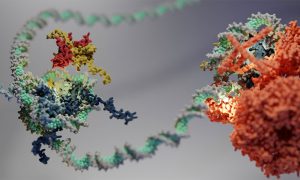
Research from the Eustermann group at EMBL Heidelberg reveals how the packaging of DNA into hexasomes impacts the function of enzymes involved in gene regulation.
SCIENCE & TECHNOLOGY
2023
sciencescience-technology
14 July 2023

EMBL researchers use a new cell sorting technology to gain new insights into cellular function in health and disease, as well as for other innovative applications.
SCIENCE & TECHNOLOGY
2023
sciencescience-technology
4 July 2023

Three EMBL group leaders and six EMBL alumni were recognised for their contributions to the life sciences.
LAB MATTERSPEOPLE & PERSPECTIVES
2023
lab-matterspeople-perspectives
3 July 2023
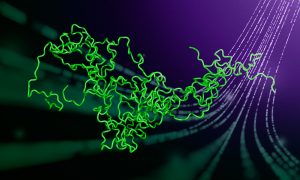
A third of all known proteins are either completely or partially unstructured. EMBL scientists contributed to a new set of guidelines – Minimum Information About a Disorder Experiment (MIADE) – that will help researchers share data on unstructured proteins in a more useful way and will enable…
SCIENCE & TECHNOLOGY
2023
sciencescience-technology
2 June 2023

During a visit to the Heidelberg EMBL campus, Minister Petra Olschowski learned about EMBL´s current research programme, its scientific operations and local collaborations, and explored its Imaging Centre and World of Molecular Biology exhibition.
CONNECTIONS
31 May 2023
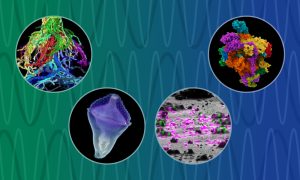
EMBL researchers and collaborators have begun an impactful innovation-development journey, thanks to a European Commission ‘IMAGINE’ grant.
CONNECTIONSLAB MATTERS
2023
connectionslab-matters
11 May 2023
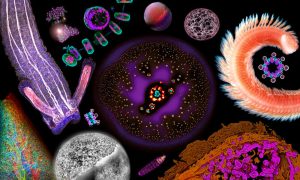
EMBL´s new permanent exhibition ‘The World of Molecular Biology’ in Heidelberg is now open for registration. The exhibition takes the visitor on a journey of scales, from genomes to ecosystems, and introduces key imaging technologies.
EMBL ANNOUNCEMENTSLAB MATTERS
2023
embl-announcementslab-matters
20 February 2023

The Baltic nation of Estonia has become a full member of EMBL, joining the organisation as its 28th member state.
EMBL ANNOUNCEMENTSLAB MATTERS
2023
embl-announcementslab-matters
2 February 2023
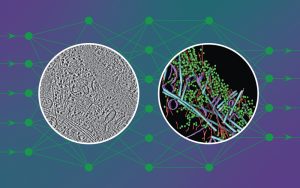
New artificial intelligence tool adds speed and detailed cellular information to analysis of cryo-electron tomography to aid researchers’ understanding of inner cell workings.
27 January 2023

New agreement with UN organisation will enable cooperation in the fields of open science, capacity building, and talent development
CONNECTIONSLAB MATTERS
2023
connectionslab-matters
25 January 2023
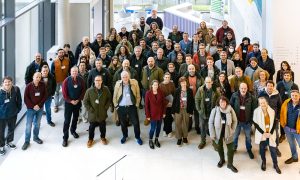
EMBL hosts inaugural meeting for major interdisciplinary project designed to boost understanding of ocean life
CONNECTIONSLAB MATTERS
2023
connectionslab-matters
4 January 2023
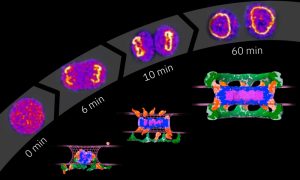
EMBL Heidelberg researchers and their collaborators reveal how the nuclear pore complex, one of the biggest molecular machines in eukaryotic cells, is assembled one protein at a time.
SCIENCE & TECHNOLOGY
2023
sciencescience-technology
21 December 2022

To identify which drugs disrupt bacterial envelope integrity, the Typas group uses a molecule called chlorophenyl red-β-D-galactopyranoside.
LAB MATTERSSCIENCE & TECHNOLOGY
2022
lab-matterspicture-of-the-weekscience-technology
17 November 2022

EMBL deepens scientific collaboration, opening the door for greater engagement and opportunities for Malta’s life science community
CONNECTIONS
12 October 2022

Visit of delegation from the Ruđer Bošković Institute to EMBL Heidelberg marks a new chapter in scientific and institutional cooperation
CONNECTIONS
7 October 2022
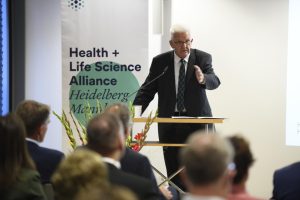
Leading scientific research facilities launch the Health + Life Science Alliance Heidelberg Mannheim. The research alliance aims to build the Rhine-Neckar region into an internationally leading biomedical-technological cluster focusing on life sciences, the health economy, and medical technology.
CONNECTIONS
7 October 2022

EMBL's Partnership Conference highlights the value of its networks, bringing researchers together to build new scientific connections.
CONNECTIONS
20 September 2022

Dieter Schwarz Foundation renews 3-year funding to EMBL for the EMBL | Stanford Life Science Alliance, a unique international collaboration bringing together researchers from the two leading institutions to develop transformative technologies and accelerate biomedical research.
CONNECTIONSLAB MATTERS
2022
connectionslab-matters
6 July 2022

Cornelius Gross, Miki Ebisuya and Nassos Typas join EMBO, the prestigious organisation for the life sciences.
EMBL ANNOUNCEMENTSLAB MATTERS
2022
embl-announcementslab-matters
5 July 2022
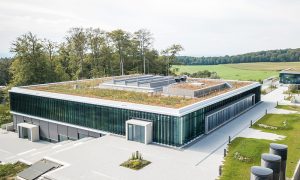
Creating a cutting-edge facility for the global life science community doesn't happen overnight. We spoke to some of those who worked to turn this dream into a reality.
CONNECTIONS
1 July 2022

Representatives from politics, industry and academia attended the inauguration ceremony at EMBL Heidelberg
EMBL ANNOUNCEMENTS
2022
embl-announcementsevents
15 June 2022
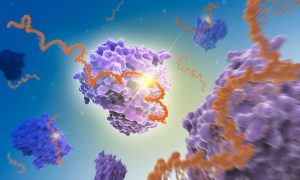
EMBL research with Enolase 1 (ENO1) points to a possible new way to understand RNA’s leading role in how cells develop.
SCIENCE & TECHNOLOGY
2022
sciencescience-technology
10 June 2022
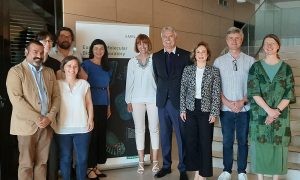
Two days of events with institutes in the country add a new chapter to successful scientific collaboration
CONNECTIONS
8 June 2022

Two former EMBL staff members have been recognised for their outstanding contributions to research in the fields of brain evolution and cancer.
EMBL ANNOUNCEMENTS
2022
alumniembl-announcements
7 June 2022

Pascale Cossart, one of the world’s foremost authorities on the biology of Listeria, brings four decades of expertise in intracellular bacterial parasitism to EMBL as a visiting scientist.
LAB MATTERSPEOPLE & PERSPECTIVES
2022
lab-matterspeople-perspectives
3 June 2022
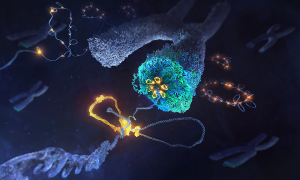
Researchers have discovered the mechanism by which a family of DNA motor proteins packages loosely arranged strands of DNA into compact individual chromosomes during cell division.
SCIENCE & TECHNOLOGY
2022
sciencescience-technology
19 May 2022
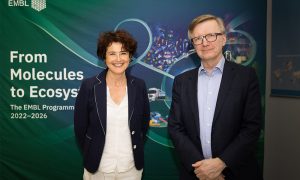
Joint workshop brings researchers together on site and virtually to discuss broad range of planetary biology topics.
CONNECTIONS
10 May 2022

EMBL’s Head of Genome Biology announced as Fellow of the Royal Society for her exceptional contributions to science.
EMBL ANNOUNCEMENTSLAB MATTERS
2022
embl-announcementslab-matters
6 May 2022
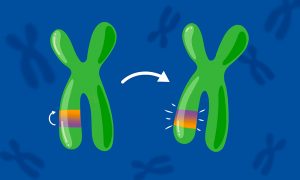
Researchers at EMBL Heidelberg found that inversions in the human genome are more common than previously thought, which impacts our understanding of certain genetic diseases.
SCIENCE & TECHNOLOGY
2022
sciencescience-technology
5 May 2022
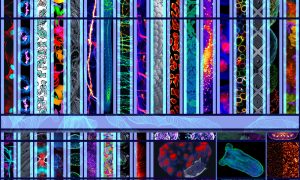
EMBL’s first Imaging Centre Symposium will occur onsite at EMBL and include tours of the new Imaging Centre on 31 May, introducing participants to the facility and its staff and featuring talks on the rapid developments in imaging technologies that have led to notable biological and medical…
EMBL ANNOUNCEMENTS
2022
embl-announcementsevents
4 May 2022

The honour recognises distinguished and continuing achievements in original research.
EMBL ANNOUNCEMENTSLAB MATTERS
2022
embl-announcementslab-matters
22 April 2022

EMBO Director Fiona Watt discusses preprints, data sharing, and evaluation in light of EMBL’s new Open Science policy
LAB MATTERSPEOPLE & PERSPECTIVES
2022
lab-matterspeople-perspectives
6 April 2022

EMBL Heidelberg’s Matthias Hentze receives the Biochemical Society’s Centenary Award for his discoveries in RNA biology.
EMBL ANNOUNCEMENTSLAB MATTERS
2022
embl-announcementslab-matters
23 March 2022
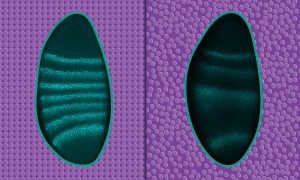
Condensates are membraneless organelles that control specific functions within a cell. Scientists at EMBL Heidelberg have shown how the physical state of condensates can influence biological function.
SCIENCE & TECHNOLOGY
2022
sciencescience-technology
20 March 2022

Judith Zaugg, Group Leader at EMBL Heidelberg, has been awarded an ERC Consolidator Grant of €2 million funded under the European Union’s Horizon Europe research and innovation programme. Over the next five years, the grant will enable her group to study cellular interactions in the human bone…
EMBL ANNOUNCEMENTSLAB MATTERS
2022
embl-announcementslab-matters
9 March 2022
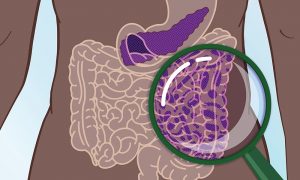
A molecular signature of 27 microorganisms in stool defines the high-risk population for the most common pancreatic cancer and could be used for early detection of the disease.
SCIENCE & TECHNOLOGY
2022
sciencescience-technology
4 March 2022

Genomes are made up of thousands of individual pieces – genes – which are expressed at different levels. Researchers at EMBL have shed light on how the placement of a gene affects its expression, as well as that of its neighbours.
SCIENCE & TECHNOLOGY
2022
sciencescience-technology
4 March 2022
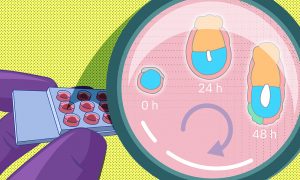
A recent study by EMBL researchers proposes a new method to grow early embryos in the laboratory. With a 3D culture set-up, scientists can closely monitor the changes embryos undergo around the time of implantation.
SCIENCE & TECHNOLOGY
2022
sciencescience-technology
2 March 2022
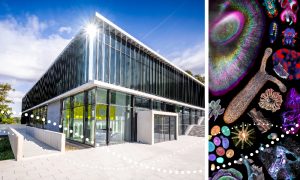
The new permanent ‘The World of Molecular Biology’ exhibition will open in mid-2023 at EMBL’s headquarters in Heidelberg. It will encourage people to actively engage with science and its relevance for everyday life.
EMBL ANNOUNCEMENTSLAB MATTERS
2022
embl-announcementslab-matters
25 February 2022
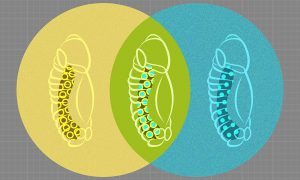
Researchers from the Furlong group at EMBL have come up with a way to observe the development of fruit-fly embryos simultaneously at the genetic and cellular levels, generating a high-resolution and integrated view of how different cell lineages form.
SCIENCE & TECHNOLOGY
2022
sciencescience-technology
23 February 2022

Michael Dorrity, one of EMBL’s newest group leaders, is studying how the environment influences early life stages in zebrafish.
LAB MATTERSPEOPLE & PERSPECTIVES
2022
lab-matterspeople-perspectives
7 February 2022
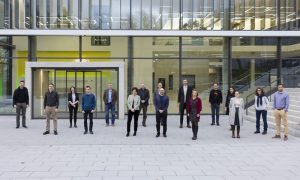
DeepMind visits EMBL Heidelberg to discuss current and future implications of Artificial Intelligence for life science research.
SCIENCE & TECHNOLOGY
2022
sciencescience-technology
16 December 2021

EMBL announces the release of its new Open Science Policy, contributing to positive culture change across the life sciences.
LAB MATTERS
9 December 2021

EMBL Senior Scientist and Head of the Genome Biology Unit is among the researchers honoured for outstanding work by the German Research Foundation (Deutsche Forschungsgemeinschaft, DFG).
EMBL ANNOUNCEMENTSLAB MATTERS
2021
embl-announcementslab-matters
8 December 2021
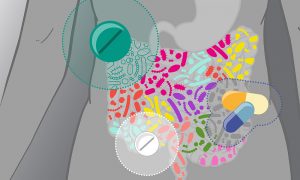
Researchers studying a massive cohort of European patients have found that commonly prescribed drugs for cardiometabolic disorders can have long-term effects on the gut microbiome. Such effects can complicate the understanding of how disease affects the microbiome and must be taken into…
SCIENCE & TECHNOLOGY
2021
sciencescience-technology
12 November 2021
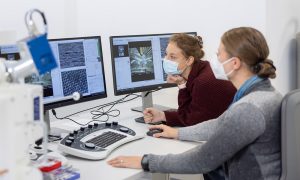
Correlative microscopy service enables PhD student from Switzerland to study structure and location of proteins cells use to communicate.
LAB MATTERSSCIENCE & TECHNOLOGY
2021
lab-mattersscience-technology
5 November 2021

Ken Holmes, outstanding pioneer of structural biology and founder of EMBL´s Hamburg site, died on 2 November 2021 at the age of 87.
PEOPLE & PERSPECTIVES
2021
alumnipeople-perspectives
5 November 2021
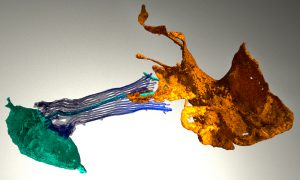
What can sponges tell us about the evolution of the brain? Sponges have the genes involved in neuronal function in higher animals. But if sponges don’t have brains, what is the role of these? EMBL scientists imaged the sponge digestive chamber to find out.
SCIENCE & TECHNOLOGY
2021
sciencescience-technology
13 October 2021
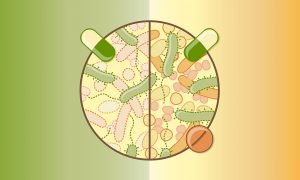
Researchers from EMBL’s Typas group and collaborators have analysed the effects of 144 antibiotics on the wellbeing of gut microbes. The study improves our understanding of antibiotics’ side effects and suggests a new approach to mitigating the adverse effects of antibiotics therapy on gut…
SCIENCE & TECHNOLOGY
2021
sciencescience-technology
5 October 2021

EMBL scientists and colleagues have developed an interactive atlas of the entire marine worm Platynereis dumerilii in its larval stage. The PlatyBrowser resource combines high-resolution gene expression data with volume electron microscopy images.
SCIENCE & TECHNOLOGY
2021
sciencescience-technology
30 September 2021
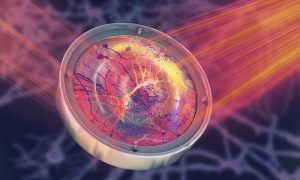
Scientists in EMBL’s Prevedel Group have developed a pioneering microscopy technique that allows researchers to observe cells hidden within opaque tissues, such as live neurons embedded deep in the brain.
SCIENCE & TECHNOLOGY
2021
sciencescience-technology
28 September 2021

EMBL and Hungarian research institutes will collaborate to address urgent biological and environmental challenges.
CONNECTIONSLAB MATTERS
2021
connectionslab-matters
9 September 2021

Former EMBL Director General Professor Iain Mattaj was awarded the German Cross of Merit (‘Verdienstkreuz 1. Klasse des Verdienstordens der Bundesrepublik Deutschland’) at a ceremony held at EMBL Heidelberg on 9 September 2021.
EMBL ANNOUNCEMENTS
2021
alumniembl-announcements
8 September 2021
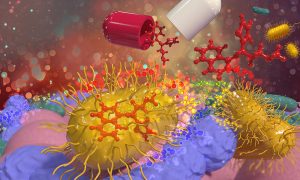
A new collaborative study led by EMBL group leaders Kiran Patil, Nassos Typas, and Peer Bork has found that common medications accumulate in human gut bacteria. This process reduces drug effectiveness and affects the metabolism of common gut microbes, thereby altering the gut microbiome.
SCIENCE & TECHNOLOGY
2021
sciencescience-technology
30 August 2021
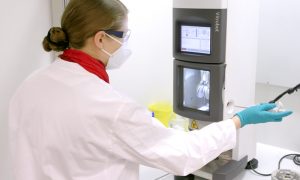
Giulia Zanetti from the Institute of Structural and Molecular Biology (ISMB) in London explains how the collaboration with the Cryo-Electron Microscopy Service Platform enabled her group to reveal the structure of protein transport complexes.
LAB MATTERSSCIENCE & TECHNOLOGY
2021
lab-mattersscience-technology
12 August 2021

EMBL Director General Edith Heard has been elected a member of the German National Academy of Sciences Leopoldina. Her admission to the ‘Human Genetics and Molecular Medicine’ section recognises her outstanding professional contributions to science.
EMBL ANNOUNCEMENTSLAB MATTERS
2021
embl-announcementslab-matters
20 July 2021

Mehdi Khadraoui, a former member of the EMBL Communications team, took this close-up of a black redstart.
LAB MATTERS
13 July 2021

EMBL Director General Edith Heard has warmly welcomed Fiona Watt, who will become the new director of EMBO.
EMBL ANNOUNCEMENTSLAB MATTERS
2021
embl-announcementslab-matters
13 July 2021

EMBL alumni Ilaria Piazza and Ken Holmes have been recognised for their outstanding contributions, and will receive their awards as part of the celebrations for EMBL World Alumni Day.
PEOPLE & PERSPECTIVES
2021
alumnipeople-perspectives
7 July 2021
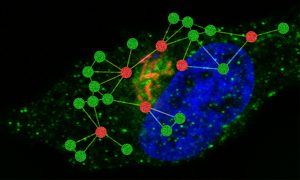
Research in the Typas group uncovers new details of the strategies Salmonella uses to survive in infected cells.
SCIENCE & TECHNOLOGY
2021
sciencescience-technology
6 July 2021

The EMBL Imaging Centre is preparing for external user access, after an on-time and on-budget build and handover to the science team.
CONNECTIONSLAB MATTERS
2021
connectionslab-matters
17 June 2021
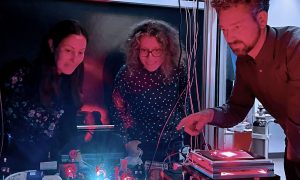
EMBL group leaders Julia Mahamid, Anna Kreshuk & Jonas Ries awarded Chan Zuckerberg Initiative grant to advance what we see inside cells.
LAB MATTERSPEOPLE & PERSPECTIVES
2021
lab-matterspeople-perspectives
4 June 2021

EMBL Director Matthias Hentze describes the Environmental Research Initiative: a community effort to solve global environmental challenges.
LAB MATTERSPEOPLE & PERSPECTIVES
2021
lab-matterspeople-perspectives
1 June 2021
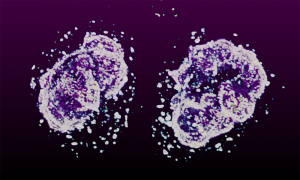
Captured by EMBL postdoc Arina Rybina, these ‘nuclear twins’ are two daughter nuclei straight after division of a HeLa cell.
SCIENCE & TECHNOLOGY
2021
picture-of-the-weekscience-technology
7 May 2021

EMBL scientists have combined artificial intelligence (AI) algorithms with two cutting-edge microscopy techniques.
SCIENCE & TECHNOLOGY
2021
sciencescience-technology
27 April 2021
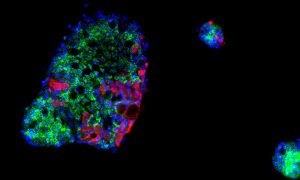
EMBL scientists, together with collaborators from Heidelberg University, have provided further evidence of the gut’s role in COVID-19.
SCIENCE & TECHNOLOGY
2021
sciencescience-technology
13 April 2021
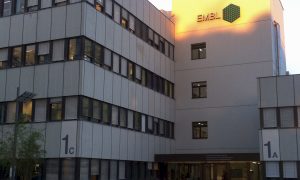
Throwback to June 2014: While EMBL Heidelberg’s main entrance is still in the dark, the well-known EMBL logo is already lit by the morning sun.
LAB MATTERS
2021
lab-matterspicture-of-the-week
9 March 2021

The contribution of EMBL Group Leader and Senior Scientist Wolfgang Huber has been recognised by the International Society for Computational Biology
EMBL ANNOUNCEMENTSLAB MATTERS
2021
embl-announcementslab-matters
26 February 2021

EMBL's Environmental Officer Brendan Rouse explains more about his role as a European Climate Pact Ambassador.
LAB MATTERS
26 February 2021

As one of EMBL’s newest group leaders, Sinem Saka will combine multiple technologies, such as microscopy and single-cell omics, to solve biological puzzles.
LAB MATTERSPEOPLE & PERSPECTIVES
2021
lab-matterspeople-perspectives
9 February 2021
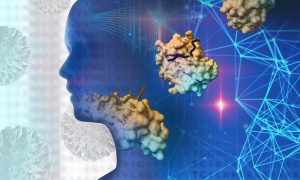
Researchers at EMBL Heidelberg have identified sequences in human proteins that might be used by SARS-CoV-2 to infect cells. They have discovered that the virus might hijack certain cellular processes, and they discuss potentially relevant drugs for treating COVID-19.
SCIENCE & TECHNOLOGY
2021
sciencescience-technology
27 January 2021

New group leader Nicoletta Petridou explains her fascination with the complexity of early embryo development, and how the interdisciplinary nature of EMBL will aid her research.
LAB MATTERSPEOPLE & PERSPECTIVES
2021
lab-matterspeople-perspectives
15 January 2021

One of EMBL’s newest group leaders, Olivier Duss, will explore how RNA folds into functional structures and how it works with proteins to control a diverse range of activities in the cell.
LAB MATTERSPEOPLE & PERSPECTIVES
2021
lab-matterspeople-perspectives
12 January 2021
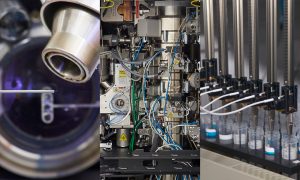
EMBL’s sites in Grenoble, Hamburg, and Heidelberg form the newest Instruct Centre. The new centre offers users access to a broad range of state-of-the-art facilities.
CONNECTIONSLAB MATTERS
2021
connectionslab-matters
17 December 2020

December has seen the start of a new chapter in the collaboration that has for years marked the relationship between the European Commission (EC) and EMBL.
CONNECTIONS
9 December 2020
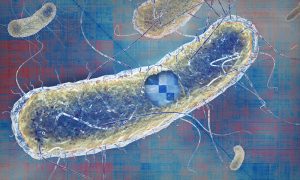
A new paper from EMBL’s Savitski team and Typas group describes their work on E. coli and how it brings a greater understanding of the way genes function and interact.
SCIENCE & TECHNOLOGY
2020
sciencescience-technology
2 December 2020
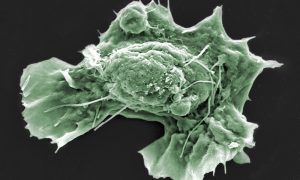
Scientists in the Diz-Muñoz group at EMBL Heidelberg are working to build understanding of the role that mechanical properties play in affecting cell behaviour – a young and rapidly developing field of study. They have developed and successfully used a highly specialised technique to manipulate…
SCIENCE & TECHNOLOGY
2020
sciencescience-technology
24 November 2020
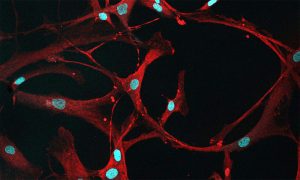
Studying cancers means also knowing what healthy cells look like. In this case, mesenchymal stromal cells (MSCs) from healthy bone marrow are a bit ‘loopy’.
SCIENCE & TECHNOLOGY
2020
picture-of-the-weekscience-technology
22 October 2020

EMBL’s Rupert Lück is engaged in developing the European Open Science Cloud (EOSC): the infrastructure that will support the future of data sharing and analysis in Europe.
CONNECTIONSLAB MATTERS
2020
connectionslab-matters
1 October 2020

EMBL’s network of alumni plays a vital role in advancing the life sciences globally. EMBL provides research, services, and infrastructure that help former staff to do this effectively. For several years EMBL has been discovering more avenues to help the life sciences across Europe. A key part of…
CONNECTIONS
24 September 2020

EMBL’s 21st Science and Society Conference will address scientific and societal responses to mass extinctions. Ahead of his keynote speech, renowned palaeontologist Mike Benton explains how looking into the deep past can give us vital insights into the future of life on Earth.
SCIENCE & TECHNOLOGY
2020
eventsscience-technology
8 September 2020
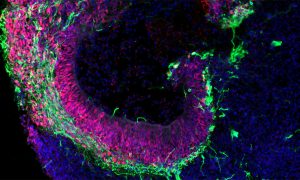
A decadal roadmap points the way to cell-based medicine for Europe
LAB MATTERSSCIENCE & TECHNOLOGY
2020
lab-mattersscience-technology
3 September 2020
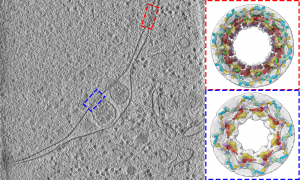
Scientists from the Beck group have studied the 3D structure of nuclear pores in budding yeast. They show how the architecture of the nuclear pore complex differs inside cells compared to its form observed in vitro studies.
SCIENCE & TECHNOLOGY
2020
sciencescience-technology
24 August 2020

The new team leader offering services in electron microscopy discusses his hopes and plans for the forthcoming EMBL Imaging Centre
LAB MATTERSPEOPLE & PERSPECTIVES
2020
lab-matterspeople-perspectives
19 August 2020
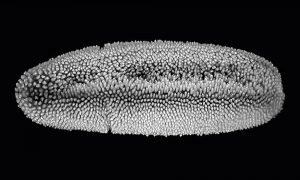
Discoveries at EMBL will help researchers to interpret one of the most common types of experiments in genomics and medical studies.
SCIENCE & TECHNOLOGY
2020
sciencescience-technology
31 July 2020
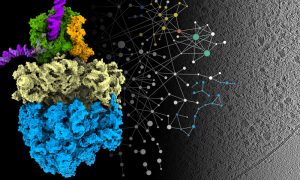
A new approach that allows researchers to see molecular machinery at work inside cells has offered a deeper understanding of how bacteria produce proteins and a unique glimpse into how they respond to antibiotics.
SCIENCE & TECHNOLOGY
2020
sciencescience-technology
28 July 2020
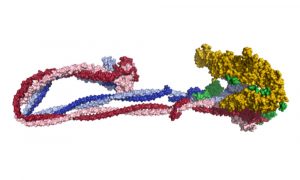
EMBL scientists and collaborators help reveal the process by which enormous quantities of DNA are folded into cells.
SCIENCE & TECHNOLOGY
2020
sciencescience-technology
21 July 2020
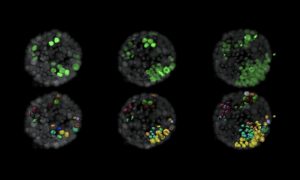
EMBL scientists have created a new, realistic 3D testbed that could help achieve the goal of stopping cancers before they start by studying cancer cells as they first form.
SCIENCE & TECHNOLOGY
2020
sciencescience-technology
16 July 2020

Three changes in senior staff positions have been confirmed at EMBL today. Jessica Vamathevan becomes Head of Strategy, Jan Korbel becomes Head of Data Science for EMBL Heidelberg, and Nassos Typas becomes Senior Scientist.
EMBL ANNOUNCEMENTSLAB MATTERS
2020
embl-announcementslab-matters
8 July 2020

This year, EMBO elected 63 new members, including Alexander Aulehla, Group Leader and Senior Scientist at EMBL Heidelberg, and Paul Flicek, Associate Director of EMBL-EBI Services, Senior Scientist, Group and Team Leader at EMBL-EBI.
EMBL ANNOUNCEMENTSLAB MATTERS
2020
embl-announcementslab-matters
3 July 2020
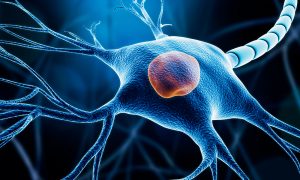
Scientists at EMBL Heidelberg have investigated stem cells and how they differentiate to become neurons. Their approach included an assessment of the complex interplay of molecules during the differentiation process and generated fundamental new insights into the role of a protein called Sox2 in…
SCIENCE & TECHNOLOGY
2020
sciencescience-technology
16 June 2020
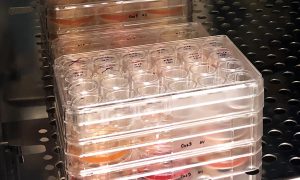
Scientists at EMBL and Heidelberg University Hospital are studying how the novel coronavirus behaves in the gut to try to better understand its epidemiology and prevent its spread. To do this, they are combining advanced imaging and sequencing technologies to study coronavirus in human intestinal…
SCIENCE & TECHNOLOGY
2020
sciencescience-technology
22 May 2020
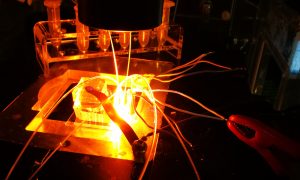
Scientists hope that a legacy of the novel coronavirus in recovered COVID-19 patients – antibodies in their blood – could lead to drugs to treat others. The Merten group at EMBL Heidelberg has pivoted its microfluidics platform to support the search for neutralising antibodies that could…
SCIENCE & TECHNOLOGY
2020
sciencescience-technology
30 April 2020
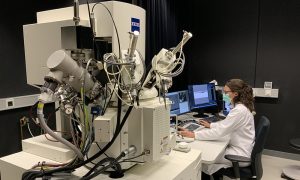
EMBL electron microscopy specialists collaborate with researchers from Heidelberg University Hospital to understand the changes occurring in cell structures upon SARS-CoV-2 infection.
SCIENCE & TECHNOLOGY
2020
sciencescience-technology
17 April 2020
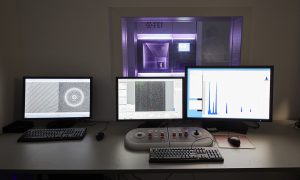
EMBL Heidelberg reopens the Cryo-Electron Microscopy Service Platform to support coronavirus structural biology research.
CONNECTIONS
16 April 2020

Scientists at EMBL Heidelberg are contributing their expertise in a community effort to develop large-scale testing methods for coronavirus. Their goal is to increase the capacity and speed of testing, which is crucial for containing the pandemic.
SCIENCE & TECHNOLOGY
2020
sciencescience-technology
24 March 2020

The iconic ATC – celebrating its 10 year anniversary this year – reflects the blue sky, the clouds and the rays of the Sun.
LAB MATTERS
2020
lab-matterspicture-of-the-week
17 March 2020
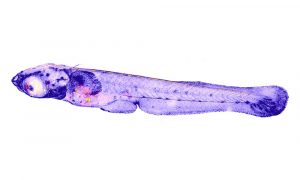
The medaka shown in this Picture of the Week was captured by Eva Hasel, a postdoc in the Leptin group at EMBL Heidelberg.
SCIENCE & TECHNOLOGY
2020
picture-of-the-weekscience-technology
11 July 2019
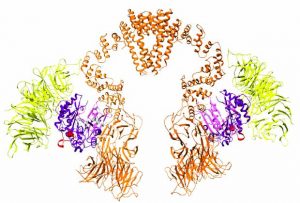
Using cryo-EM, scientists have determined the structure of a large protein complex called Elongator.
SCIENCE & TECHNOLOGY
2019
sciencescience-technology
24 October 2018
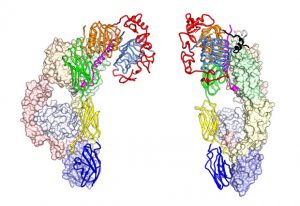
New study reveals how to make therapeutic insulins more effective than they currently are
SCIENCE & TECHNOLOGY
2018
sciencescience-technology
17 January 2018
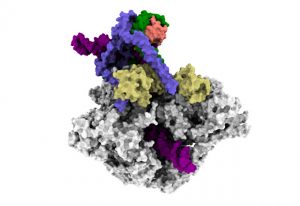
EMBL researchers uncover how a key enzyme that helps cells make new proteins starts its work
SCIENCE & TECHNOLOGY
2018
sciencescience-technology
4 October 2017
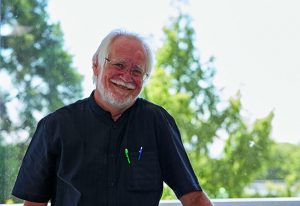
EMBL alumnus recognised for cryo-electron microscopy work
EMBL ANNOUNCEMENTS
2017
embl-announcementsscience
11 February 2016
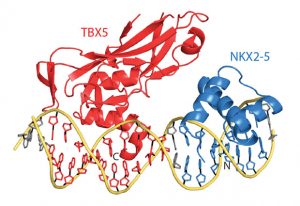
How transcription factors interact to create a heart
SCIENCE & TECHNOLOGY
2016
sciencescience-technology
25 November 2015
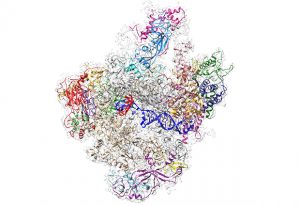
CryoEM solves 3D atomic structure of largest and most elusive RNA polymerase.
SCIENCE & TECHNOLOGY
2015
sciencescience-technology
16 July 2015
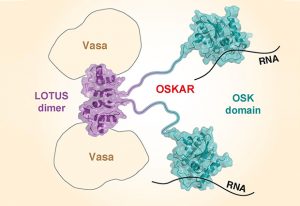
3D structure of Oskar protein gives first molecular insight into how it functions.
SCIENCE & TECHNOLOGY
2015
sciencescience-technology
11 March 2011
Scientists at the European Molecular Biology Laboratory (EMBL) in Heidelberg, Germany, have developed a new method which enables researchers to label any protein of their choice with any of a wide variety of previously available compounds, in living cells, by introducing a single reactive…
SCIENCE & TECHNOLOGY
2011
sciencescience-technology
6 March 2011
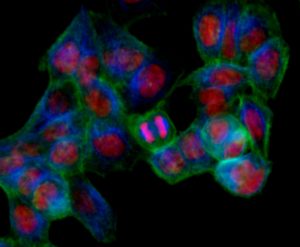
Scientists at the European Molecular Biology Laboratory (EMBL) and the German Cancer Research Centre (DKFZ), both in Heidelberg, Germany, have developed a new method that uncovers the combined effects of genes. Published online today in Nature Methods, it helps understand how different genes can…
SCIENCE & TECHNOLOGY
2011
sciencescience-technology
4 March 2011
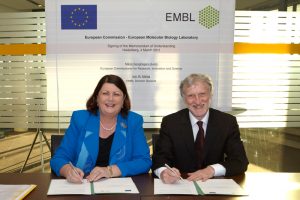
In a Memorandum of Understanding signed today, the European Commission (EC) and the European Molecular Biology Laboratory (EMBL) formalise their desire to maintain and further develop their cooperation. “I am delighted to sign the renewed and strengthened Memorandum of Understanding between the…
LAB MATTERS
23 January 2011
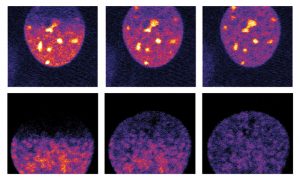
The sight of a researcher sitting at a microscope for hours, painstakingly searching for the right cells, may soon be a thing of the past, thanks to new software created by scientists at the European Molecular Biology Laboratory (EMBL) in Heidelberg, Germany. Presented today in Nature Methods, the…
SCIENCE & TECHNOLOGY
2011
sciencescience-technology
4 July 2010
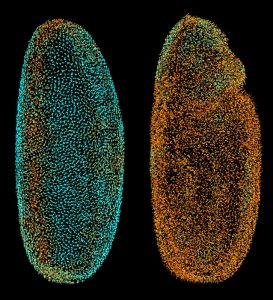
The scientists at the European Molecular Biology Laboratory (EMBL) in Heidelberg, Germany, who ‘fathered’ the Digital Embryo have now given it wings, creating the Fly Digital Embryo. In work published today in Nature Methods, they were able to capture fruit fly development on film, and were the…
SCIENCE & TECHNOLOGY
2010
sciencescience-technology
24 June 2010
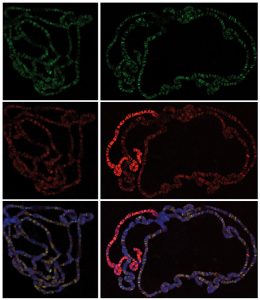
Researchers from the European Molecular Biology Laboratory (EMBL) in Heidelberg, Germany, and the Max-Planck Institute of Immunobiology Freiburg have identified a novel protein complex that regulates around 4000 genes in the fruit fly Drosophila and likely plays an important role in mammals, too.…
SCIENCE & TECHNOLOGY
2010
sciencescience-technology
2 May 2010
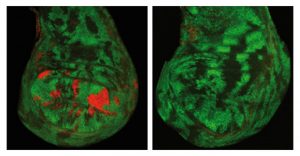
During embryonic development, proteins called Polycomb group complexes turn genes off when and where their activity must not be present, preventing specialised tissues and organs from forming in the wrong places. They also play an important role in processes like stem cell differentiation and…
SCIENCE & TECHNOLOGY
2010
sciencescience-technology
1 April 2010
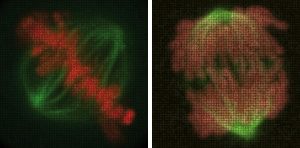
Name a human gene, and you’ll find a movie online showing you what happens to cells when it is switched off. This is the resource that researchers at the European Molecular Biology Laboratory (EMBL) in Heidelberg, Germany, and their collaborators in the Mitocheck consortium are making freely…
SCIENCE & TECHNOLOGY
2010
sciencescience-technology
9 March 2010
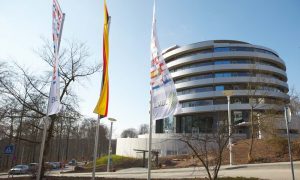
Today, the German Minister for Education and Research, Annette Schavan, officially opens the new training and conference centre for the life sciences on the campus of the European Molecular Biology Laboratory (EMBL) in Heidelberg. “This new centre in Heidelberg will form a central European…
LAB MATTERS
19 January 2010
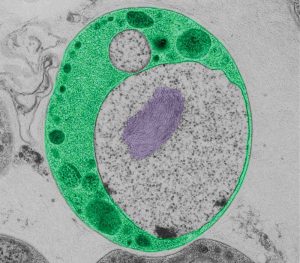
Although they are present almost everywhere, on land and sea, a group of related bacteria in the superphylum Planctomycetes-Verrucomicrobia-Chlamydiae, or PVC, have remained in relative obscurity ever since they were first described about a decade ago. Scientists at the European Molecular Biology…
SCIENCE & TECHNOLOGY
2010
sciencescience-technology
10 December 2009
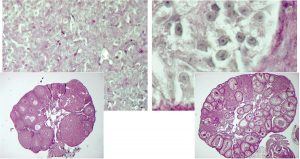
Is it a boy or a girl? Expecting parents may be accustomed to this question, but contrary to what they may think, the answer doesn’t depend solely on their child’s sex chromosomes. Scientists at the European Molecular Biology Laboratory (EMBL) in Heidelberg, Germany and the Medical Research…
SCIENCE & TECHNOLOGY
2009
sciencescience-technology
30 September 2009
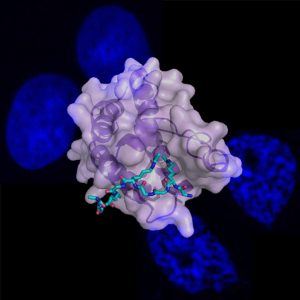
In the quest for speed, olympic swimmers shave themselves or squeeze into high-tech super-suits. In the body, sperm are the only cells that swim and, as speed is crucial to fertility, have developed their own ways to become exceptionally streamlined. Scientists at the European Molecular Biology…
SCIENCE & TECHNOLOGY
2009
sciencescience-technology
13 August 2009
Our genome is constantly under attack from things like UV light and toxins, which can damage or even break DNA strands and ultimately lead to cancer and other diseases. Scientists have known for a long time that when DNA is damaged, a key enzyme sets off a cellular ‘alarm bell’ to alert the…
SCIENCE & TECHNOLOGY
2009
sciencescience-technology
2 August 2009
Chronic inflammatory lung diseases like chronic bronchitis and emphysema are a major global health problem, and the fourth leading cause of death and disability in developed countries, with smoking accounting for 90% of the risk for developing them. Work by scientists at the European Molecular…
SCIENCE & TECHNOLOGY
2009
sciencescience-technology
7 July 2009
Scientists at the European Molecular Biology Laboratory (EMBL) and the University of Heidelberg, Germany, have come a step closer to understanding how cholesterol levels are regulated. In a study published today in the journal Cell Metabolism, the researchers identified 20 genes that are involved…
SCIENCE & TECHNOLOGY
2009
sciencescience-technology
25 June 2009
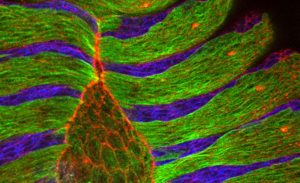
Researchers at the European Molecular Biology Laboratory (EMBL) in Heidelberg, Germany, came a step closer to understanding how cells close gaps not only during embryonic development but also during wound healing. Their study, published this week in the journal Cell, uncovers a fundamental…
SCIENCE & TECHNOLOGY
2009
sciencescience-technology
23 June 2009
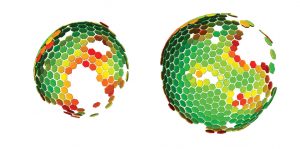
Scientists at the European Molecular Biology Laboratory (EMBL) and the University Clinic Heidelberg, Germany, have produced a three-dimensional reconstruction of HIV (Human Immunodeficiency Virus), which shows the structure of the immature form of the virus at unprecedented detail. Immature HIV is…
SCIENCE & TECHNOLOGY
2009
sciencescience-technology
9 June 2009
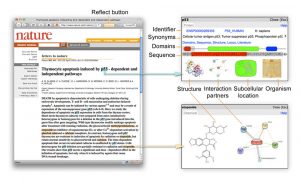
The life sciences are scaling up and produce huge amounts of data and new literature at an amazing pace. The European Molecular Biology Laboratory (EMBL) now offers a new free service to help researchers, teachers and students keep up-to-date with scientific literature on the web, especially when…
SCIENCE & TECHNOLOGY
2009
sciencescience-technology
28 May 2009
Proteins are the executive agents that carry out all processes in a cell. Their activity is controlled and modified with the help of small chemical tags that can be dynamically added to and removed from the protein. 25 years after its first discovery, researchers at the European Molecular Biology…
SCIENCE & TECHNOLOGY
2009
sciencescience-technology
23 April 2009
It can be found in all life forms, and serves a multitude of purposes, from energy storage to stress response to bone calcification. This molecular jack-of-all trades is polyphosphate, a long chain of phosphate molecules. Researchers at the European Molecular Biology Laboratory (EMBL) in…
SCIENCE & TECHNOLOGY
2009
sciencescience-technology
24 February 2009

‘Useless fish with big eyes’. This is what Medaka, the name of the Japanese killifish in the pictures, means in Japan where it originally comes from. While its eyes are undeniably big, the fish has proven remarkably useful for scientists. It is a simple model organism, amenable to…
SCIENCE & TECHNOLOGY
2009
sciencescience-technology
25 January 2009
Genes that contain instructions for making proteins make up less than 2% of the human genome. Yet, for unknown reasons, most of our genome is transcribed into RNA. The same is true for many other organisms that are easier to study than humans. Researchers in the groups of Lars Steinmetz at the…
SCIENCE & TECHNOLOGY
2009
sciencescience-technology
No results found






















































































































































































